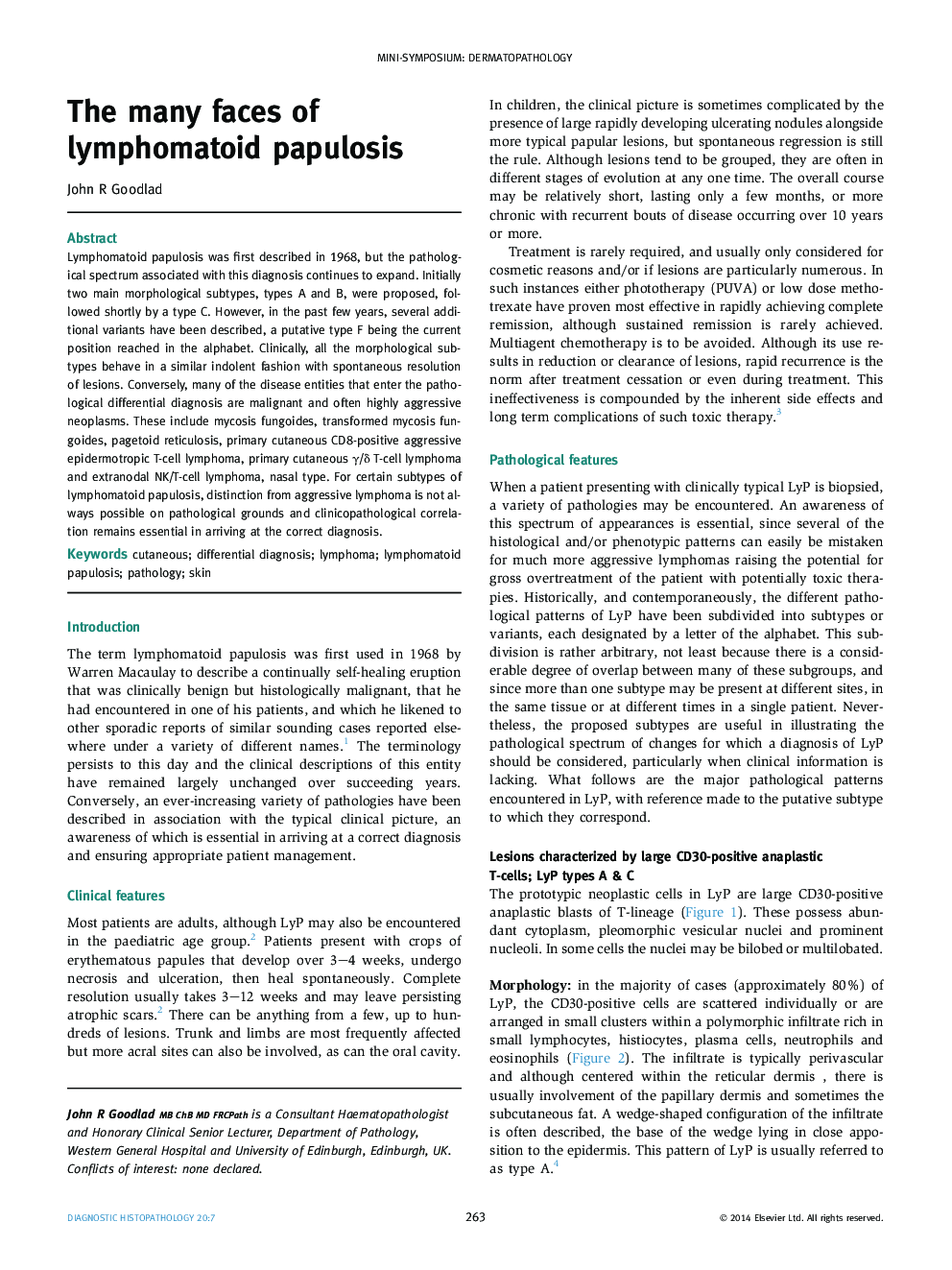| Article ID | Journal | Published Year | Pages | File Type |
|---|---|---|---|---|
| 4131095 | Diagnostic Histopathology | 2014 | 8 Pages |
Lymphomatoid papulosis was first described in 1968, but the pathological spectrum associated with this diagnosis continues to expand. Initially two main morphological subtypes, types A and B, were proposed, followed shortly by a type C. However, in the past few years, several additional variants have been described, a putative type F being the current position reached in the alphabet. Clinically, all the morphological subtypes behave in a similar indolent fashion with spontaneous resolution of lesions. Conversely, many of the disease entities that enter the pathological differential diagnosis are malignant and often highly aggressive neoplasms. These include mycosis fungoides, transformed mycosis fungoides, pagetoid reticulosis, primary cutaneous CD8-positive aggressive epidermotropic T-cell lymphoma, primary cutaneous γ/δ T-cell lymphoma and extranodal NK/T-cell lymphoma, nasal type. For certain subtypes of lymphomatoid papulosis, distinction from aggressive lymphoma is not always possible on pathological grounds and clinicopathological correlation remains essential in arriving at the correct diagnosis.
